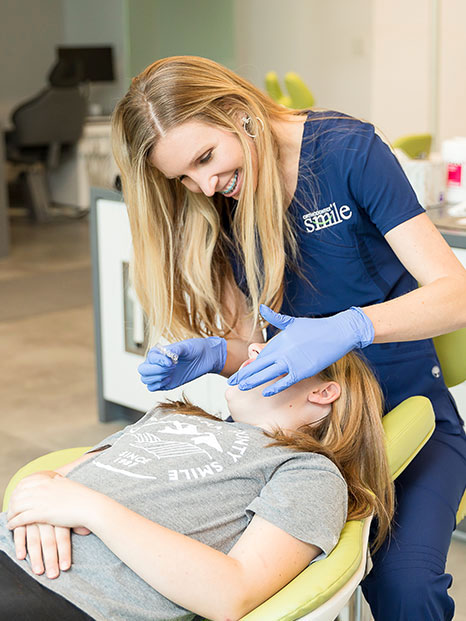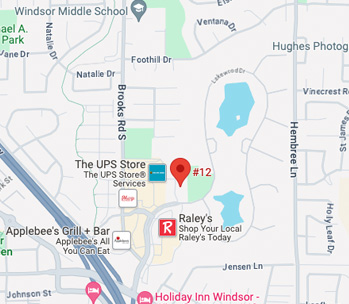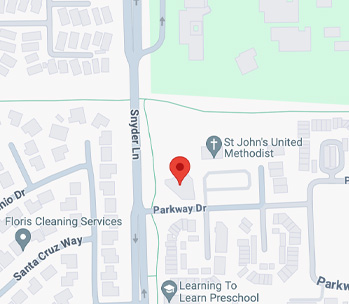True orthodontic emergencies are rare, but if they occur we are available to you. As a general rule, you should call our office when you experience severe pain or have a painful appliance problem you can't take care of yourself. We'll be able to schedule an appointment to resolve the problem. Convenient locations in Santa Rosa, Windsor, and Rohnert Park, California mean you won't have to travel far to see our team.
You might be surprised to learn that you may be able to solve many problems yourself temporarily until you can get to our office. If there is a loose piece that you can remove, put it in a plastic bag or envelope and bring it with you to your next appointment. If your braces are poking you, put soft wax on the piece that's sticking out. If the wire has slid to one side, you can pull it back to the other side with needle-nosed pliers, replacing it in the tube on the back tooth.
What are non-emergency issues I can expect from my orthodontics?
While orthodontics generally isn’t uncomfortable, there may be times when you experience discomfort during your treatment. When braces are first applied, you may feel soreness in your mouth, teeth, or jaws.
You may also experience soreness after adjustment appointments or, if using Invisalign®, after changing to your next set of aligners as your teeth acclimate to their next step in realignment. These aren’t emergencies.
Normal soreness can be alleviated with over-the-counter painkillers or swishing with saltwater. As teeth move, a wire may begin to poke the inside of your cheek; you can adjust the wire using a blunt object like a spoon until you can come in and have the wire clipped, or use orthodontic wax to coat it.

General soreness
When you get your braces on, you may feel general soreness in your mouth, and teeth may be tender to biting pressures for three to five days. Stick to a soft diet until your teeth do not hurt to chew. Irritated gums and other sore spots can be relieved by rinsing your mouth with a warm saltwater mouthwash. Dissolve one teaspoonful of salt in eight ounces of warm water, and rinse your mouth vigorously. If the tenderness is severe, take Acetaminophen (Tylenol®) or whatever you normally take for headache or similar pain. Aspirin, Ibuprofen (Motrin®, Advil) and Naproxen Sodium (Naprosyn, Anaprox) actually slow the tooth movement, so it is not advisable to use them frequently while wearing braces.
The lips, cheeks, and tongue may become irritated for one to two weeks as they learn a new posture and become accustomed to the surface of the braces. You can put wax on the braces to lessen this.

Headgear
Sometimes discomfort is caused by not wearing the headgear as instructed by your orthodontist. Please refer to the instructions provided by your orthodontist. If the facebow (metal piece) is bent, please call our office for assistance. The headgear should hurt less the more it's worn, so be sure you get in the prescribed number of hours.
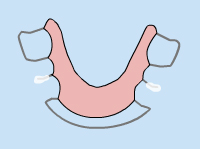
Loose appliance
If your appliance is poking you, place wax on the offending part.
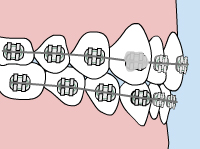
Loose bracket
If your bracket or band is still attached to the wire, you should leave it in place and put wax on it if needed for comfort. If the bracket or band can be removed easily, place it in an envelope and save it to bring to your next appointment.
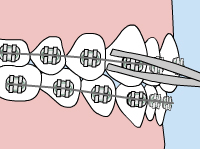
Loose wire
Using a pair of tweezers or needle-nosed pliers, try to put your wire back into place. It is okay to use a piece of floss to tie the wire into place; tie the floss around the bracket in place of the missing colored o-ring. If you cannot put the wire into a comfortable position, and covering the end with wax doesn't help, as a last resort, use a small fingernail clipper to clip the wire behind the last tooth to which it is securely fastened. If the end of the wire is still sharp, place wax on it.
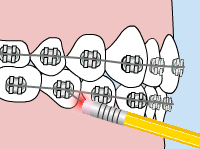
Poking wire
Using a pencil eraser, push the poking wire down or place wax on it so that it is no longer poking.
What is an orthodontic emergency?
Orthodontic emergencies occur when you’re in intense pain that can’t be relieved using the above solutions, or your appliance is broken and jabbing painfully into your cheek with no way to fix it. More rare orthodontic emergencies include trauma or injury to the mouth, teeth, or face, or infected gums, or other parts of your mouth. As soon as these issues arise, call the practice immediately, and we will schedule an appointment for you as soon as possible.
What should I do during an orthodontic emergency?
First, don’t panic. Orthodontia is very safe, and emergencies are rare. If something feels wrong, identify the problem. Using a mirror, you or a member of your household can look into your mouth to determine the cause of the issue.
Next, determine if you can fix it at home. Using dental wax to cover an offending piece of your appliance can solve many common orthodontic problems.
If your issue isn’t fixable, or you’re experiencing severe pain, trauma to the mouth or face, or an infection, reach out to Smile Orthodontics immediately.
What if my orthodontic emergency occurs outside of normal office hours?
Here at Smile Orthodontics, we provide emergency care 24 hours a day, seven days a week. After regular business hours, you will be referred to the appropriate contact information for our doctors, who will talk with you to determine the next steps.
If the team is unable to solve your immediate issue over the phone, you still need to schedule an appointment during regular business hours to ensure your appliance isn’t damaged or in need of adjustments.
The team at Smile Orthodontics is here for you at all hours to ensure you receive proper care in an emergency. Call or schedule an appointment online with Smile Orthodontics today to know you’re in the best hands for your orthodontic care.

